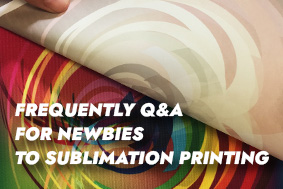 Easy-to-Design Mother's Day Gift Ideas
Easy-to-Design Mother's Day Gift Ideas
May .11.2024
In many countries, Mother's Day is celebrated on the second Sunday of May every year and is celebrated on this day in nearly 80 countries around the world. It is a special day when people thank their mothers for their love and devotion and offer holiday blessings and gifts. This makes Mother's Day not only one of the most popular holidays but also one of the largest consumer holidays. There will be huge consumer demand around the holidays, and consumers are more enthusiastic about buying gifts.
 Frequently Q&A for Newbies to Sublimation Printing
Frequently Q&A for Newbies to Sublimation Printing
Apr .26.2024
Sublimation printing is a common digital printing process in the personalized customization industry. It can be widely used in many industries such as clothing, decoration, home furnishing, and advertising. As the market demand for personalized customization and on-demand production has further increased in recent years, sublimation printing is gradually becoming more and more popular. According to Google Trends, global searches have grown by approximately 115% since 2004.
 Choose sublimation paper? Focus on quality over price
Choose sublimation paper? Focus on quality over price
Apr .12.2024
Sublimation paper is a carrier in the process of sublimation printing. Its process is to use a sublimation printer to print portraits, landscapes, text and other design graphics onto the top of the sublimation paper, and then heat to make the heat transfer ink sublimation penetrate the substrate, to transfer some of the patterns to porcelain plates, textiles, metals and other materials.
 7 Factors To Consider Before Choosing A Digital Textile Printer
7 Factors To Consider Before Choosing A Digital Textile Printer
Apr .03.2024
Textiles and apparel fabrics are becoming more personalized and comfortable as people's clothing needs become more individual. Digital printing technology is becoming increasingly popular with the public due to its advantages such as high print accuracy, no need for plate making, flexible batch size, environmental protection and small footprint. However, how companies choose the right digital textile printer has become a new problem. This article discusses several factors that need to be considered when choosing a digital textile printer, hoping to give you some inspiration.


 Easy-to-Design Mother's Day Gift Ideas
Easy-to-Design Mother's Day Gift Ideas
 Frequently Q&A for Newbies to Sublimation Printing
Frequently Q&A for Newbies to Sublimation Printing
 Choose sublimation paper? Focus on quality over price
Choose sublimation paper? Focus on quality over price
 7 Factors To Consider Before Choosing A Digital Textile Printer
7 Factors To Consider Before Choosing A Digital Textile Printer